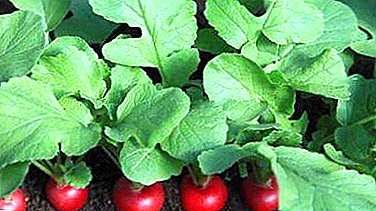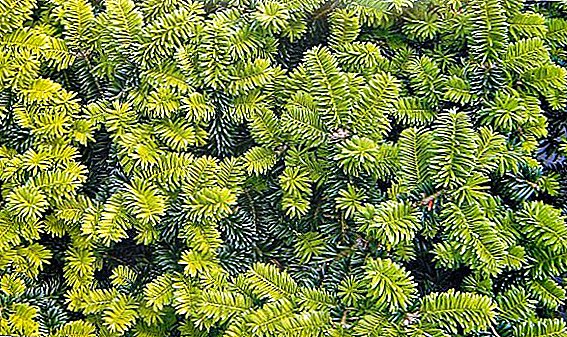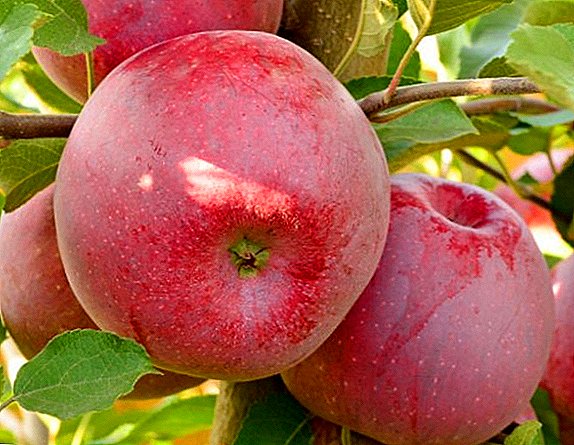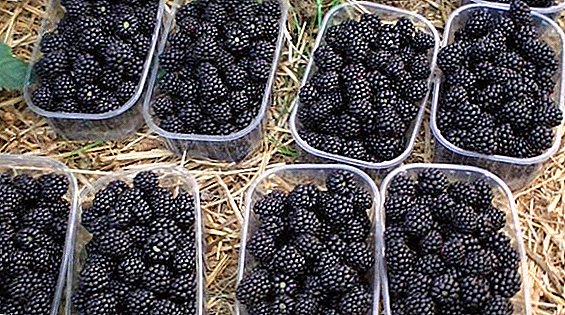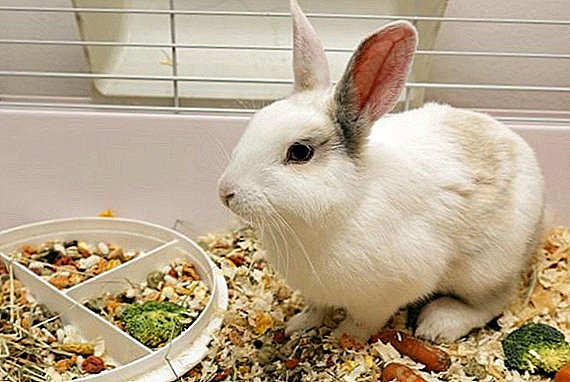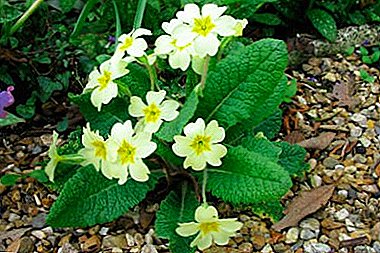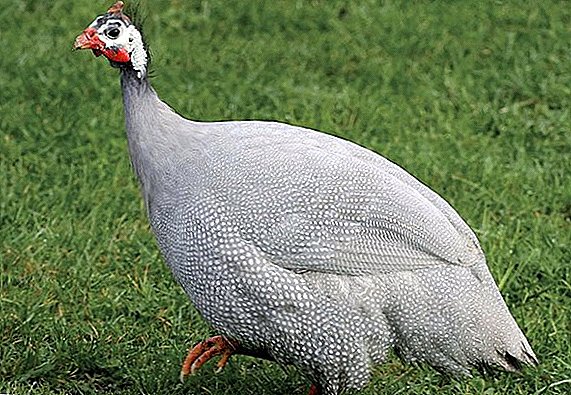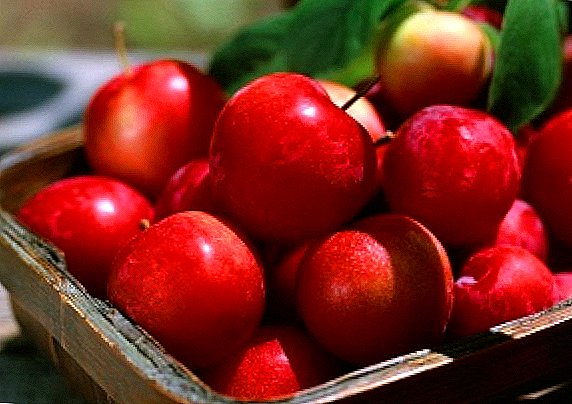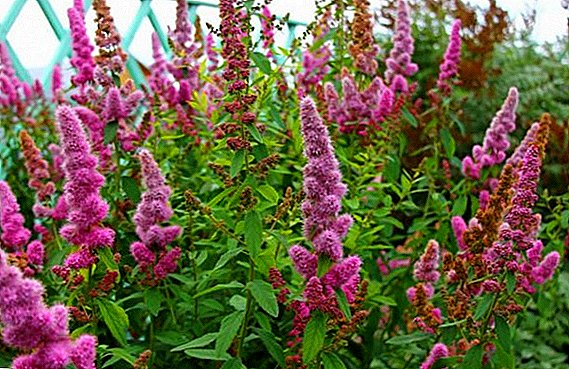 Deciduous shrubs in landscape design are particularly successful, especially if these plants are unpretentious in their care and are tolerant to various weather conditions.
Deciduous shrubs in landscape design are particularly successful, especially if these plants are unpretentious in their care and are tolerant to various weather conditions.
Today we will talk about Billard's spirea, its cultivation and use in the garden.
Botanical description
The plant is characterized by good growth, the bush reaches two and a half meters in height. The shoots are straight, with the growth stretched upwards, forming a dense, rounded crown. At the base of the shoots lignified, without foliage, ribbed, gray-brown. Young branches are flexible, densely covered with bright green foliage, the color of the bark has a reddish tint. 
The leaves are of an elongated lanceolate form up to ten centimeters in length with a clear central vein, glaucous from the bottom.
The bush blooms at the end of July, the flowering period is long (up to and including October, sometimes before the first frosts). Pyramidal inflorescences on a long peduncle dotted with small flowers with five rounded petals and long staminate threads, giving the inflorescence a fluffy look. Inflorescences are painted in bright pink color.
Check out also the peculiarities of cultivation of such varieties as Spirea, like "Snowmund", Japanese, "Vangutta", "Ivolistna", birch-leaved, "Bumalda", "Grefsheym".
Because of its hybrid origin, Billard spirey does not bear fruit. But the long flowering period and large (about 20 cm in length), lush inflorescences more than compensate for this disadvantage.
The most famous species of this species are:
- "Pink" (pink tips);

- "Triumphant" (crimson flowers).

Did you know? In Russia, the plant was called tavolga, its flexible, strong rods were used to make a whip handle, and wood was also used to make ramrods for cleaning and lubricating firearms.
Distribution and habitat
The species is distributed in Europe, Russia, Central Asia, Japan and China. Shrub prefers to grow in forest-steppe regions, forest and near the mountain slopes, near water bodies, it is found in the subalpine mountain regions of the Northern Hemisphere.
Use in landscape design
Spirea is one of the most used plants in the decoration of garden and park areas: it blooms spectacularly, does not require any special delicacy, and is perfectly amenable to shaping.
Shrub is ideal as a hedge, zoning, as it can reach a height of more than two meters. An interesting decision will be to plant several varieties in the form of an alley. 
It can be the center of a composition of ground cover grassy plants and stone sculptures, refreshing the shore of an artificial reservoir, giving it a more naturalistic look.
The shrub is beautiful in both single and group planting, its neighbors can be:
- weigela;
- juniper;
- deytion;
- thuja;
- skoumpia
Lush pyramid inflorescences in harmony with other summer flowers in fresh bouquets, and the honey aroma of the plant is unlikely to leave anyone indifferent.
Growing and caring for plants
The key to success in growing shrubs will be the right place, time and compliance with the rules of planting and care. 
Did you know? In 1839, Berlin scientist Karl Lövig discovered splicing glycoside salicin, a component that is chemically manipulated into acetylsalicylic acid, abbreviated aspirin.
Site selection and soil quality
Meadowsweet can grow in the shade, but fully revealed in a place lit by the sun. The best for it will be loose, nutritious soil with a neutral or slightly acid reaction. It is not necessary to plant a plant in a valley where melted water or irrigation water accumulates; stagnant moisture is not desirable.
Landing technique
Meadow plant is planted in spring and autumn, preferably in cloudy weather, if it is sunny, then it is better in the evening. A couple of hours before planting, saplings are abundantly moistened. The root system of seedlings is fragile, so they are usually sold in containers, and when planted they do not shake off the stuck soil in order not to damage the shoots. 
The landing scheme is as follows:
- The hole is dug in dimensions of 40x30, the depth should be one third larger than the volume of the root system.
- Prepare the substrate: two parts of sod land, one part of leafy soil, peat and sand.
- Drainage is laid on the bottom, a third of the substrate is poured, a plant is laid on a hillock, the roots are straightened.
- Sprinkle with the remaining soil mixture, so that the root collar is level with the surface of the earth.
- At the end of the procedure spend abundant watering.
Important! When planting several bushes between them, keep a distance of up to half a meter.
Watering and moisture
Spiraea can do without irrigation, subject to regular rainfall. In another case, it requires moderate watering, without waterlogging. To preserve moisture, it is better to mulch the tree trunk with sawdust or peat.
Pre-loosen the soil, but gently, since the root system of the plant is superficial. 
Top dressing
In early spring, for good growth, grassland needs to be fed with infusion of slurry: a bucket of liquid is diluted with five buckets of water, adding five grams of superphosphate. After a flowering period, on the condition of poor soil, fertilize with a universal mineral composition. Following the instructions.
The universal mineral fertilizers include Plantafol, AgroMaster, Sudarushka, Azofoska, Kemira.
Relation to temperature
Given the prevalence of plants in the northern regions, it is perfectly tolerant of a harsh winter, but in the absence of snow, it is advisable to cover the tree trunk with spiraea with a lapnik tree so that the surface root system does not freeze out.
In particularly cold regions, bushes can be covered with special covering materials, although the bush can withstand a frost down to -15 ° C.
Breeding
Hybrid varieties do not propagate by seed, make it cuttings or layering. 
For the first method, the best time is the end of June. Semi-woody shoots are cut, about 10 cm long, rooted in a mixture of sand and peat in equal parts.
Care must be taken to ensure that the rooting substrate is always slightly moist. In the autumn, before the onset of frost, a cutting is found in a permanent place in the garden.
In the second method, a strong shoot is tilted to the ground, placed in a dug groove and pressed with a staple. Pinch, covered with soil and dry foliage. The following spring transplanted rooted escape to a permanent place.
Trimming rules and other recommendations
Pruning, forming and sanitary, carried out in the spring, before the movement of juices in the branches. Remove broken, weak shoots, shorten all shoots to the blossoming buds. 
During the formation of the crown shoots are removed, which thicken it, grow into the bush, interfere with flowering branches. Shorten shoots, knocked out of the total mass, giving the crown a neat appearance.
Experienced gardeners recommend pruning at a distance of thirty centimeters from the ground annually. Remove old branches under the stump, regularly remove the root growth, so that formless thickets are not formed.
Important! To extend the ability to bloom long and abundantly, dried inflorescences are cut immediately after the flowering period.
Pests, diseases and prevention
Type Billard, like all hybrid plants, has absorbed the best characteristics of the parent varieties: "Douglas" and "Ivolistnoy." Among the characteristics of resistance to major diseases of the species, as well as to insect pests. 
Prevention measures against those and others will not be superfluous. In the spring against fungal and viral infections, the bushes are sprayed with copper-containing preparations, for example, Bordeaux mixture. It is necessary to thin out the bush in time to avoid high humidity, which is an ideal medium for fungi.
From pests (aphid, leafworm, pink miner, spider mite), plants can be planted at the site to frighten insects like insect, such as tansy or marigolds.
Treatment of pests carried out with the help of insecticides and acaricides:
- "Intavir";
- "Lightning";
- Fury;
- "Metaphos";
- "Etafos".
The general rule of prevention is the regular removal of weeds, cleaning of the tree circle for the winter, in the spring, timely sanitary pruning. 
Spirea will occupy a worthy place in a large city park, and in a private garden, and at six hundred square meters of summer cottages. This is a simple plant in terms of care, given the varietal characteristics and plant several varieties, it will delight with its large and bright inflorescences the entire summer season until late autumn.


